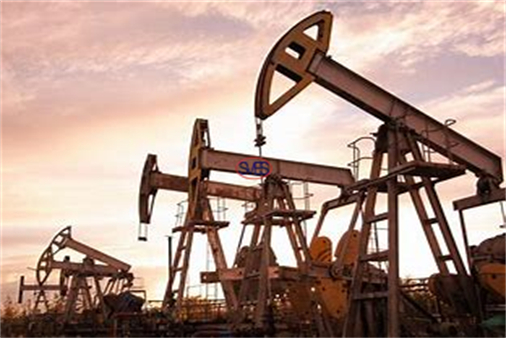
The international oil market may continue to have supply and demand imbalances
2024-04-06 10:00The international oil market may continue to have supply and demand imbalances
The production reduction alliance "OPEC+" led by Saudi Arabia and Russia announced at the latest production reduction meeting that it would extend the production reduction agreement originally scheduled to expire at the end of March to the end of June. The total production reduction will remain at 2.2 million barrels per day.
Institutions generally believe that since this year, the two major international benchmark oil prices have risen month after month, but the current price lCrude Oilevel is still hovering in the range of US$75/barrel to US$85/barrel; despite the short-term decline in crude oil demand in some energy importing countries, it is still difficult to meet supply and demand Balance brings support, and front-month crude oil futures contracts are at a premium compared with later months. A tightening of the oil market may be the norm this year.
Discussion on gradually increasing production in the second half of the year at the earliest
The "Financial Times" pointed out that at the regular production reduction meeting in November last year, "OPEC+" reached an agreement: by the end of 2024, the total crude oil production will be reduced by 2 million barrels per day. In the first quarter of this year, Saudi Arabia, Russia and other countries voluntarily cut additional production, bringing the "OPEC+" production reduction to 2.2 million barrels per day.

It is understood that according to the plan, Saudi Arabia will continue to bear most of the production cuts from now to the end of June, that is, Saudi crude oil production will remain at 9 million barrels per day in the first half of the year. At the end of January this year, Saudi Aramco announced that it would suspend the expansion of crude oil production from 12 million barrels per day to 13 million barrels per day under instructions from the Saudi Ministry of Energy. In this regard, Saudi Energy Minister Aziz said that it is still undecided whether to give up production expansion, and Saudi Arabia will continue to review this decision to ensure the stability of the energy market. "In fact, we have a lot of spare capacity to buffer the oil market." He emphasized.
Russia's TASS news agency pointed out that Russia voluntarily cut crude oil production by about 500,000 barrels per day in the first quarter. Subsequently, Russian Deputy Prime Minister Alexander Novak said that in the first half of the year, Russia's crude oil production and export supply combined were reduced by 471,000 barrels per day.
Iraq, the United Arab Emirates, Kuwait, Algeria, Kazakhstan, and Oman are all willing to maintain voluntary production reduction targets. Among them, Iraq and the United Arab Emirates have voluntarily extended production reductions of 220,000 barrels per day and 163,000 barrels per day until the end of June respectively.
Giacomo Romeo, an analyst at Jefferies, an American investment bank, said: "This is a signal of the unity of the production reduction alliance, indicating that they are in no rush to restore supply, and a gradual increase in production can fully cope with emergencies."
The industry generally believes that "OPEC+" discussions on "gradual production increase" will be carried out in the second half of the year, because some oil-producing countries hope to increase supply to the market by then, but this depends on market conditions, provided that no excess is created.
Provide more room for rising oil prices
In fact, "OPEC+" has always sought to maintain a balance in the oil market. Although oil prices have stabilized a lot, the price level has not reached their standards.
Affected by the decision to extend production cuts, both Brent and U.S. WTI crude oil prices rose. Data compiled by the U.S. CNBC News Network show that from November last year to early March this year, Brent crude oil prices increased by 6%, and WTI prices increased by nearly 8%. In the last week of February, Brent crude oil prices rose by more than 2%, closing above US$83/barrel on March 1; WTI rose by more than 4% in the last week of February, closing at US$79.97/barrel on March 1st. It is the first time since November last year that it touched US$80 per barrel.
Goldman Sachs pointed out that "OPEC+" extended production cuts until the end of June, aiming to maintain a moderate gap in the oil market and provide more room for potential increases in oil prices. Goldman Sachs has raised its forecast for the peak Brent crude oil price in the summer of 2024 to $87/barrel. JPMorgan Chase predicts that in 2024, the average price of Brent crude oil will be US$83/barrel, and will exceed US$80/barrel from the second quarter; in 2025, the average price of Brent crude oil will be around US$75/barrel, with the first It can exceed US$80/barrel in a quarter.
Citibank believes that in 2024, international oil prices will remain around US$75 per barrel, but are expected to hit triple digits and may rise to US$100 per barrel in the next 12 to 18 months. Factors driving the rise in oil prices include rising geopolitical risks, " OPEC+" further cuts production, supply disruptions from major oil-producing countries, etc.
Standard Chartered Bank also believes that as the supply situation tightens, international oil prices may reach and exceed US$90/barrel. In the fourth quarter of 2024, the price of Brent crude oil will exceed US$100/barrel; in 2025, the price of Brent crude oil will exceed US$100/barrel. The average price will reach a high of US$109/barrel.
Supply side narrowing may continue throughout the year
Industry insiders believe that there are various signs that the oil market may continue to have an imbalance between supply and demand this year. The International Energy Agency predicts that crude oil demand will grow by 1.2 million barrels per day this year, about half of 2023; OPEC believes that crude oil demand will grow by 2.2 million barrels per day; Goldman Sachs predicts that crude oil demand will grow by 1.5 million barrels per day in 2024. day. On the supply side, the "OPEC+" production cuts have been extended into the second quarter, and supply continues to shrink, while non-"OPEC+" production growth may not be as optimistic as expected.
Paul Horsnell, head of commodities research at Standard Chartered Bank, said that the growth in U.S. shale oil production has greatly restrained oil price increases in the past two years, but this ability is weakening starting this year.
The U.S. Energy Information Administration predicts that U.S. crude oil production will increase by only 170,000 barrels per day in 2024 compared with 2023, which is the smallest annual increase since 2016 (not taking into account the COVID-19 epidemic).
Oil Price Network reported that tepid oil prices have caused U.S. oil and gas producers to accelerate the closure of drilling platforms, and many operators who have given up drilling are even seeking to be acquired by large companies. According to data from Baker Hughes, the world's third largest oil services company, the number of oil drilling rigs operating in the United States has dropped by nearly 20% since the end of 2022.
"Production from shale wells declines most rapidly early in their lives, and this decline signals a potential significant slowdown in production growth," Paul Horsnell said.
In addition, geopolitical conflicts remain the biggest variable affecting the supply and demand situation. Arkas Dosh, head of North American commodities research at Citibank, pointed out that any major changes may have an impact on oil-producing countries, resulting in a larger supply gap. "There is a risk of supply disruptions from places like Iraq, Iran, Libya, Nigeria and Venezuela."
